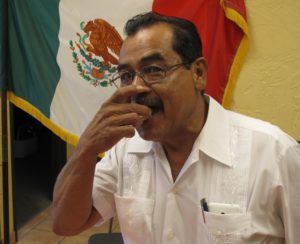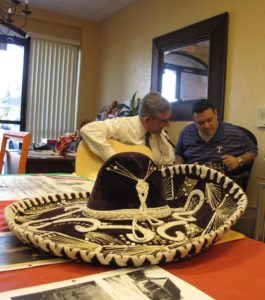by Norma Gutiérrez-Torres
When it comes to parent involvement, I feel that I have been exposed to every single method and venue: from sitting in a meeting for a couple of hours, to cooking 400 meals, from chaperoning a carwash, to going out of state for a parents leadership conference. With a college graduate and a senior in High School, I have done it all.
I remember when my little girl was ready to start school, I was so eager to find the perfect place for her enrichment, within a nurturing, safe environment. Of course academics were important, but I needed for her to feel accepted and included. I remember visiting more than 10 different schools, even the ones I couldn’t afford. I just needed to see the differences between schools, and I wanted to learn how school administration and other systems worked in general too.
If you are a parent, I’m sure this has happened to you: even if you are educated, you sometimes doubt if you are being a good parent. It happened to me often. It seemed like my nursing degree just helped me when they were sick. At that time I was new in town; I didn’t know how the school system and classrooms functioned yet, and on top of that, I didn’t know the language well.
A wise friend recommended that on my school visits, I check out the bathrooms, observe how people greet each other, and how the kids treat the cafeteria attendant. I encountered all kinds of barriers. In one example, I visited a public school with my five-year old daughter. There, I was treated with welcome by the receptionist, given my visitor badge, and proceeded to tour the school. However, in the hallway, I encountered the principal’s secretary and got the feeling that I was a threat for the school. She looked me up and down, at our shoes, our outfits; I wondered if I wasn’t dressed well enough. Rather than greeting us with a “hello,” she asked what we were doing there. I was painfully aware that I was “different,” a foreigner, a stranger. Through this experience, I didn’t feel that I could fit in some places, and didn’t want my child to have that experience either.
On the other hand, in visiting another possible school, a new charter school, one of the teachers there was so kind. I told her that we spoke Spanish in the home. In learning this, she took about 20 minutes of her time to explain my options for classrooms. She suggested a special kind of language assessment class.
In the end, I did find a perfect fit for our family. I just had to apply, and wait for an opening.
Once at my child’s school, a fellow parent came and talked to me. His child was in my daughter’s class, so we visited, and he asked me if I wanted to be part of the Parent Teacher Association. I wasn’t sure what to expect, and I felt afraid and insecure. But I agreed. When I came to my first meeting, I wondered: How I am supposed to help here? It seems that they have everything under control. They even have a list of things I can do. I’ll just write my name next to one and do it. I don’t have to be present or connect with anyone. I could be anonymous. But, I came to find that in addition to my help with school parties and hospitality events, they also valued my ideas and wanted to listen to my thoughts.
After two or three years of involvement in the PTA, that same parent invited me to consider serving in our district chapter of “Parents for Public Schools.”
Serving in our local PPS board, I feel “one of them,” a valued member of the group with different experiences and background. They wanted to hear what I had to say. I came to understand that my contributions were important and necessary for the well-being of the whole community, where we all belong.
If our intention and purposes are for our children – all of them – to have “the best education possible,” not as an academic-focus only, but for them to discover their strengths and weaknesses, to cultivate and nurture their individuality, to develop their social and cultural competence and awareness, and practice their ability to be inclusive of others different from themselves…
Then, the only way to accomplish this is to be intentional about “welcoming the stranger,” creating bridges where there doesn’t seem to be a natural connection. It takes risk to include and care for each other in this way. The aim is to create and tend spaces where we are encouraged to both give and receive – even if you feel like me in the beginning, that you have nothing to contribute.
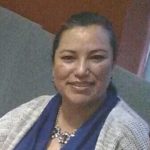 Norma Gutiérrez-Torres has lived in Waco nearly 20 years. She is an active member of the GEO (Guardians Educators Organization) at Meyer High School in Rapoport Academy, a former PPS (Parents for Public Schools) Board Member, and more than anything she enjoys dancing the night away.
Norma Gutiérrez-Torres has lived in Waco nearly 20 years. She is an active member of the GEO (Guardians Educators Organization) at Meyer High School in Rapoport Academy, a former PPS (Parents for Public Schools) Board Member, and more than anything she enjoys dancing the night away.
The Act Locally Waco blog publishes posts with a connection to these aspirations for Waco. If you are interested in writing for the Act Locally Waco Blog, please email [email protected] for more information.
by Norma Gutiérrez-Torres
When it comes to parent involvement, I feel that I have been exposed to every single method and venue: from sitting in a meeting for a couple of hours, to cooking 400 meals, from chaperoning a carwash, to going out of state for a parents leadership conference. With a college graduate and a senior in High School, I have done it all.
I remember when my little girl was ready to start school, I was so eager to find the perfect place for her enrichment, within a nurturing, safe environment. Of course academics were important, but I needed for her to feel accepted and included. I remember visiting more than 10 different schools, even the ones I couldn’t afford. I just needed to see the differences between schools, and I wanted to learn how school administration and other systems worked in general too.
If you are a parent, I’m sure this has happened to you: even if you are educated, you sometimes doubt if you are being a good parent. It happened to me often. It seemed like my nursing degree just helped me when they were sick. At that time I was new in town; I didn’t know how the school system and classrooms functioned yet, and on top of that, I didn’t know the language well.
A wise friend recommended that on my school visits, I check out the bathrooms, observe how people greet each other, and how the kids treat the cafeteria attendant. I encountered all kinds of barriers. In one example, I visited a public school with my five-year old daughter. There, I was treated with welcome by the receptionist, given my visitor badge, and proceeded to tour the school. However, in the hallway, I encountered the principal’s secretary and got the feeling that I was a threat for the school. She looked me up and down, at our shoes, our outfits; I wondered if I wasn’t dressed well enough. Rather than greeting us with a “hello,” she asked what we were doing there. I was painfully aware that I was “different,” a foreigner, a stranger. Through this experience, I didn’t feel that I could fit in some places, and didn’t want my child to have that experience either.
On the other hand, in visiting another possible school, a new charter school, one of the teachers there was so kind. I told her that we spoke Spanish in the home. In learning this, she took about 20 minutes of her time to explain my options for classrooms. She suggested a special kind of language assessment class.
In the end, I did find a perfect fit for our family. I just had to apply, and wait for an opening.
Once at my child’s school, a fellow parent came and talked to me. His child was in my daughter’s class, so we visited, and he asked me if I wanted to be part of the Parent Teacher Association. I wasn’t sure what to expect, and I felt afraid and insecure. But I agreed. When I came to my first meeting, I wondered: How I am supposed to help here? It seems that they have everything under control. They even have a list of things I can do. I’ll just write my name next to one and do it. I don’t have to be present or connect with anyone. I could be anonymous. But, I came to find that in addition to my help with school parties and hospitality events, they also valued my ideas and wanted to listen to my thoughts.
After two or three years of involvement in the PTA, that same parent invited me to consider serving in our district chapter of “Parents for Public Schools.”
Serving in our local PPS board, I feel “one of them,” a valued member of the group with different experiences and background. They wanted to hear what I had to say. I came to understand that my contributions were important and necessary for the well-being of the whole community, where we all belong.
If our intention and purposes are for our children – all of them – to have “the best education possible,” not as an academic-focus only, but for them to discover their strengths and weaknesses, to cultivate and nurture their individuality, to develop their social and cultural competence and awareness, and practice their ability to be inclusive of others different from themselves…
Then, the only way to accomplish this is to be intentional about “welcoming the stranger,” creating bridges where there doesn’t seem to be a natural connection. It takes risk to include and care for each other in this way. The aim is to create and tend spaces where we are encouraged to both give and receive – even if you feel like me in the beginning, that you have nothing to contribute.
 Norma Gutiérrez-Torres has lived in Waco nearly 20 years. She is an active member of the GEO (Guardians Educators Organization) at Meyer High School in Rapoport Academy, a former PPS (Parents for Public Schools) Board Member, and more than anything she enjoys dancing the night away.
Norma Gutiérrez-Torres has lived in Waco nearly 20 years. She is an active member of the GEO (Guardians Educators Organization) at Meyer High School in Rapoport Academy, a former PPS (Parents for Public Schools) Board Member, and more than anything she enjoys dancing the night away.
The Act Locally Waco blog publishes posts with a connection to these aspirations for Waco. If you are interested in writing for the Act Locally Waco Blog, please email [email protected] for more information.
by Marlayna Botello
As a new young professional in the Waco community, I believe it is my responsibility to make sure that students not only receive the opportunity to achieve their dreams, but also that students know they have a mentor there to support and guide them through any adversity that they may face. My professional role as a Project Link Liaison at University high school is to guide students via one on one advising sessions that target academic success and college readiness and via group sessions. I also conduct activities specific to each student’s grade level to properly prepare them for a successful college experience and career choice.
Project Link
Every student deserves an equal chance of succeeding after high school. Project Link is a new grant-funded collaborative effort under the leadership of Tom Stanton, Executive Director of The Rapoport Foundation and Matthew Polk Executive Director of Prosper Waco. This grant is intended to increase college enrollment and success among Waco-area students. Project Link provides an opportunity for students to receive individual guidance beginning in the 9th grade and continuing to the student’s second year of college.
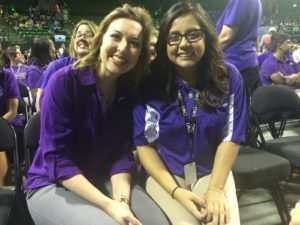 Project Link’s Mission is to create a college going culture by linking Waco-area students to postsecondary education and workforce opportunities. We are devoted to challenging and supporting students to reach their full potential by advocating success through personal discovery, academic growth, and community involvement. To achieve this, Project Link has provided staff at two local high schools, Waco ISD’s University High School (including myself) and LaVega ISD’s LaVega High School as well as staff at MCC and TSTC to ensure that students have a coach and cheerleader from ninth grade through college.
Project Link’s Mission is to create a college going culture by linking Waco-area students to postsecondary education and workforce opportunities. We are devoted to challenging and supporting students to reach their full potential by advocating success through personal discovery, academic growth, and community involvement. To achieve this, Project Link has provided staff at two local high schools, Waco ISD’s University High School (including myself) and LaVega ISD’s LaVega High School as well as staff at MCC and TSTC to ensure that students have a coach and cheerleader from ninth grade through college.
My role is to work with the students at University High school, and it has been such a blessing. These students are beyond determined to make a name for themselves after high school…we just need to give them a chance. Project Link will give our students the push and motivation to complete the college readiness process. We, as Project Link Liaisons, are excited to see where our students end up in life.
Growing Up in Waco
My passion for the Waco Community grows stronger every year that I live and serve in this city. No city will ever match the wonderful people, the unique beauty, and the family feel of Waco, Texas.
I have lived in Waco all of my life, have developed a pride for my city and want to give back in the biggest way possible. I graduated from Waco high school in 2011 and went on to get my bachelor’s from Baylor University December 2014. I am proud of growing up and continuing my journey in Waco.
Growing Up In Waco ISD
I attended all Waco ISD schools from Pre-k to my senior year of high school. I walked the beautiful halls of Dean Highland Elementary School, Lake Air Middle School, and Waco High School. While attending these schools, I discovered that my life in the Waco Independent School District allowed me to explore diverse educational, cultural, and extracurricular opportunities. My eyes were opened to a world of inspiring classmates and educators. At this time in my life I have discovered that I would have never become the individual that I am today without growing up in Waco ISD.
Waco ISD has a very special place in my heart. I believe that the time I spent in Waco ISD revealed the abundance of potential that the young people of this district possess. This experience has inspired me to help our students believe that their life goals and dreams are obtainable and can in fact become a reality.
How Can You Help? Invest In Our Youth Today
If we as a community want change our city, we need to invest our lives in inspiring change in the societal barriers that exist in our education system. I admit, like many others, that at times I find myself getting so caught up in the selfishness of my life that I don’t realize that there are thousands of students that are going to bed hungry, or are working two jobs to support their families in my own city. This is the same city that I take so much pride in. How can we say we are proud when we let things like this happen in our community everyday? Many of us need to think about how we can be a helping hand to the community today. How can we change lives for the better? It starts with our youth. It should be everyone’s priority to invest in our youth to ensure that our city continues to excel.
How can you help today? Step inside the walls of our public schools right now and volunteer. And when you volunteer, don’t only observe our students, but interact with them. Ask them how they are doing. Ask them how classes are going. Ask them about their struggles. I have learned that all our students look for in an adult is someone that cares. Caring creates trust, which will make a big impact in our student’s lives. Why? Because, they aren’t used to that kind of treatment from society. They are not used to being treated like they belong.
Finally, I would ask you consider the misrepresentation of these students, whose daily struggles surpass anything you could ever imagine a 4-18 year old would experience. There is so much work to be done in our community before we can change the world, but it will take the entire community to make these changes.
I am very thankful to be a part of the Project Link Program. The amount of support that we are receiving from other organizations and institutions is just astounding. We are ready to get our students started on the right path to success! You can help make that goal a reality!
Be proud of where you came from and strive to make your home a better place.
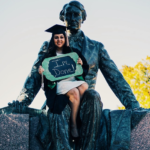 Marlayna Botello is a Project Link Liaison at University High School. Born and raised in Waco, Marlayna is a proud graduate of Waco ISD schools and Baylor University. She just purchased her first home and plans to continue to support her Baylor Bears for many years to come! Sic ’em!
Marlayna Botello is a Project Link Liaison at University High School. Born and raised in Waco, Marlayna is a proud graduate of Waco ISD schools and Baylor University. She just purchased her first home and plans to continue to support her Baylor Bears for many years to come! Sic ’em!
The Act Locally Waco blog publishes posts with a connection to these aspirations for Waco. If you are interested in writing for the Act Locally Waco Blog, please email [email protected] for more information
by C J Wood
Often when people think of treating mental health disorders they think of medicine and therapy. These two things are only part of what is needed for someone to thrive again. Just as with any other disease, recovery includes caring for the body, mind, and spirit. This works best in the context of community.
As someone who has a mental health disorder, the first step towards instability is losing my routine. Going to bed and waking up at the same time, eating healthy meals at regularly scheduled times, and taking my medication on a regular basis all impact my ability to cope with my symptoms. Friends and family can support these habits by understanding their importance. Not giving a person a hard time when they won’t stay out late or eating healthy meals with a person helps them not feel isolated.
Being a gatekeeper is a crucial role for friends and family to play. Being a gatekeeper often looks like a bodyguard. For a spouse, it can mean allowing your partner to take a nap or excusing yourselves from a social function. Friends can also help a friend exit overwhelming situations like needing to leave in the middle of a movie or in the middle of grocery shopping. Being a gatekeeper ultimately means being present and aware. It does not mean making the person a project.
I do not know how I would have made it through a very rough patch without my friend Megan. She was a gatekeeper for me but she also allowed me to reciprocate by supporting her and being present in whatever capacity I could. Often that meant helping put her kids to bed and reading bedtime stories to them. She also knew not to ask me, “Have you been taking your medication?” She identified symptoms and asked about them. She asked open ended questions like “How are you feeling today?” Or stated an observation like “You seem a bit anxious today? What’s going on?” She knew I could have a bad day unrelated to my mental health disorder. Megan also pointed out when I was doing well. I had dinner with her family at least once a week. She offered me community and friendship.
As a person who shared my faith, Megan gave me the space and grace to not attend church. She understood how stress inducing this could be. She did cultivate and encourage opportunities that connected me to my faith community and God outside traditional rituals and expectations.
Community is essential to holistic recovery. It provides the scaffolding of grace, hope, and encouragement to support the other aspects of recovery. It celebrates what a person can do no matter how small like getting out of bed and brushing your teeth. It prevents isolation and can lessen stigma. No one can recover alone.
 C J Wood lives in San Antonio, TX, where she works as a Resident Chaplain for the Baptist Health System. She lived in Waco while attending Truett Seminary where she earned her MDiv. CJ then went on to teach 3rd grade for Waco ISD before moving to India to work as an education consultant. Most recently CJ worked for AVANCE-Waco. She is currently working on her DMin in Formational Counseling from Ashland Theological Seminary in Ohio. She is the proud aunt of 2 nieces and 5 god children. CJ loves her Lhasa Apso Jasmine Rose who she brought back from India.
C J Wood lives in San Antonio, TX, where she works as a Resident Chaplain for the Baptist Health System. She lived in Waco while attending Truett Seminary where she earned her MDiv. CJ then went on to teach 3rd grade for Waco ISD before moving to India to work as an education consultant. Most recently CJ worked for AVANCE-Waco. She is currently working on her DMin in Formational Counseling from Ashland Theological Seminary in Ohio. She is the proud aunt of 2 nieces and 5 god children. CJ loves her Lhasa Apso Jasmine Rose who she brought back from India.
The Act Locally Waco blog publishes posts with a connection to these aspirations for Waco. If you are interested in writing for the Act Locally Waco Blog, please email [email protected] for more information
By Ashley Bean Thornton
September 15 through October 15 is National Hispanic American Heritage Month. This month of celebrating Hispanic culture was established in 1988, but this is the first year that I have taken the opportunity to enjoy some of the local festivities associated with it. So far I have been to two events.
One was the big “Fiestas Patrias” celebration at the Extraco Event Center. As I neared the event center I noticed the parking lot was packed and there was a line of cars waiting to get in. The floor of the arena looked like an ocean of people all having fun and enjoying a great night of music and mass togetherness. Congratulations to the folks who hosted this Fiesta! It was literally a “huge” success.
One of the first and most obvious ways to judge an event is number of participants. The automatic assumption is if it’s bigger, that’s better. Having a lot of people means you can afford flashy, expensive stuff – the hottest band, the lights, the smoke, the fireworks. As Waco grows we’ll have more of these kinds of events, and good for us, because they are really fun!
That brings me to the other event I have attended as part of my personal celebration of National Hispanic American Heritage Month. On September 16, I went to a wonderful gathering at the Centex Hispanic Chamber of Commerce. September 16, as I’m sure you know, is Mexican Independence Day. The Hispanic Chamber, along with a group who is working to put together a Waco Hispanic Museum, hosted an event to commemorate The “Grito de Dolores.” I didn’t know what that was, but thanks to the wonders of Wikipedia, I was able to educate myself a little bit: “The Grito de Dolores (“Cry of Dolores”) was uttered from the small town of Dolores, near Guanajuato in Mexico, on September 16, 1810. It is the event that marks the beginning of the Mexican War of Independence. The “grito” was the pronunciamiento of the Mexican War of Independence by Miguel Hidalgo y Costilla, a Roman Catholic priest.”
It was a small gathering. I think there were probably 12 or 15 of us. Our hosts, Alice and Joe Rodriguez, pulled a folding table into the front lobby of the Hispanic Chamber building on LaSalle. They covered it with red and green table cloths to match the Mexican flag and scattered mementos to commemorate the occasion – historical pictures of the Mexican American Community of Waco, a doll in traditional Mexican dress, a poster commemorating the heroes of the revolution. There was cake and Dr Pepper, and someone had made some delicious little cookies that tasted like shortbread with cinnamon and sugar.
Pretty soon we were snapping pictures and laughing together. Someone ran out to the car and grabbed a guitar and several folks joined in to sing a few songs. I got a narrated tour of a scrapbook full of memories. Most of the pictures were from the 70’s and 80’s, so I got to see several of my new friends in their younger days — darker, longer hair and much shorter shorts! Louis Garcia, Chairman of the Waco Hispanic Museum, read a history of the “Grito de Dolores.”
After the revolutionary history lesson, we settled into a different kind of history lesson – stories. I learned about how the September 16 celebration in Waco used to last four days. There would be parades and dances at the Mutualista Hall. Neighbors would enjoy snacks from the “puestos” (concession stands, food trucks). When the children got hot and sweaty they would take a dip in “La Pila,” the fountain that was the hub of the Calle Dos (Second Street) Mexican American community.
It’s easy to see that big events like the “Fiestas Patrias” celebration at the event center, or the recent Brad Paisley concert at Baylor, or even the Palm Sunday “Gathering” last year are important. They are exciting. They make a big splash. They give us all a shared experience. They bring good publicity to our city. I appreciate the people who put them on, and I look forward to more of them in the future.
I also want to say a big thank you to the folks in town who are hosting and organizing smaller events — the “Grito de Dolores” celebrations, the Waco Poets Society open mic nights, the Community Race Relations Coalition meetings – events where groups of 10 to 30 people gather. These smaller events help us get to know each other. They provide a time and place for building the kind of understanding that only comes from learning each other’s names and listening to each others’ stories.
The big gatherings help us wave our Waco flag proudly for everyone to see. In these small get-togethers we weave the cloth of our community, thread by thread.
Are you looking for ways to celebrate National Hispanic Heritage month? There are lots of things going on in Waco through the rest of September and on into November. For more information visit the ¡Viva Waco! website at www.creativewaco.org/vivawaco. If you are interested in learning more about the Waco Hispanic Museum or getting involved, please contact Louis Garcia by email at [email protected].
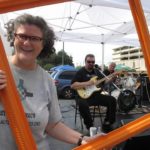 This Act Locally Waco blog post is by Ashley Bean Thornton, the Manager of the www.www.actlocallywaco.org website and the editor of the Friday Update newsletter: The WHOLE Enchilada. The Act Locally Waco blog publishes posts with a connection to these aspirations for Waco. If you are interested in writing for the Act Locally Waco Blog, please email [email protected] for more information.
This Act Locally Waco blog post is by Ashley Bean Thornton, the Manager of the www.www.actlocallywaco.org website and the editor of the Friday Update newsletter: The WHOLE Enchilada. The Act Locally Waco blog publishes posts with a connection to these aspirations for Waco. If you are interested in writing for the Act Locally Waco Blog, please email [email protected] for more information.
By Diego Loredo
“If you want to go to college, make sure you apply for tons of scholarships!”
You’ve probably heard it before right? Although it may get annoying, it is no doubt extremely important. Then again, winning scholarships are easier said than done. You may think that you’re not good enough or smart enough, I thought the same thing when I was in high school, but trust me it is possible.
I’ve been in the same position that many high school seniors and aspiring college freshmen may be in right now. “How am I supposed to win scholarships to pay for my college education?” I constantly worried about it during and after school. Eventually, I went to my counselor (shout out to Mrs. Place at UHS!) and asked her how I can apply for scholarships. She provided me with a list of scholarships and told me where I can go to apply for them.
After finding out about all of these scholarships, I applied away. I applied online, applied to the scholarships on the list Mrs. Place gave me, and continued to search for other scholarships. Overall, I applied for over 10 different scholarships. My hard work eventually payed off and I ended up winning three scholarships: the Brazos Education Foundation Scholarship ($4,000), the A.J. Moore Business Advisory Board Scholarship ($1,000), and the Top 10% Scholarship ($600).
The scholarship that helped me the most was the Brazos Education Foundation Scholarship. I won $4,000, the most out of all of my scholarships. The money is renewable for my four years in college, with $3,000 going towards my tuition and fees and $1,000 going towards textbooks. I was also given a mentor who gives me advice and helps me throughout college (shout out to my mentor Phillip Applebaum!).
Words cannot explain how much the Brazos Education Foundation has helped me. They provide useful workshops that help us in certain aspects ranging from study tips to health insurance, host fun events, and are always willing to help me out.
Now you’re probably wondering, “How is this supposed to help me win scholarships?” Well, while applying for these scholarships I made sure I followed these five important guidelines that have helped me and will no doubt help other students looking for scholarships:
Ask your Counselor!
Your counselor will probably be your best source for finding scholarships. If you are ever having trouble at figuring out what to apply for, just head to your counselor’s office and he/she can help you find a good starting point. And not just for scholarships, your counselor will be the main person helping you when preparing for college. For example, your counselor can provide you with a waiver and advice for the SAT, Scholastic Assessment Test, (which is required for most colleges). Whether it’s for scholarships or college prep, your counselor’s office should be the first place to go for help.
Check online!
Another great source for finding scholarships are right on your computer. There are a ton of great scholarships and grants available online, you just need to know where to look. One great source is www.collegeboard.org. You’ll need to make an account on College Board anyway to register for the SAT. College Board has a great feature where you can search for dozens of scholarships, which shows information on what the scholarship is, whether or not you qualify for it, and how to apply. College Board is also a great place to help you prepare for college. College Planning, a feature on College Board, can help you explore what kind of career you want to pursue, search for colleges, and provide information on the cost of attending college.
Make connections!
I cannot stress this enough. Making the right connections can help you increase your chances to win scholarships. Become well acquainted with your counselor, do internships, and get to know those who are providing scholarships. Doing this helped me win the Brazos Education Foundation Scholarship. I did an internship for them the summer before my senior year. This helped me because I already knew them when I was interviewed and it also helped them since they already knew who I was.
Practice writing essays!
This may seem boring but it is necessary. Most scholarships will require an essay or two along with the application. The essays in the application become a big factor in the selection process. Let me say that again, it is a HUGE factor in selecting who will receive the scholarship. English was my strongest subject and I loved writing essays so it was easy for me to write them. It was also one of the main reasons why I won the Brazos Education Foundation Scholarship.
Apply, apply, apply!
Apply to as many scholarships as you can. Here, enough is never enough. I applied for 10+ scholarships and won three. That may not seem like much but, along with financial aid, those scholarships are paying for my college expenses. You should aim for 5-10 scholarships, and more if you can. Trust me on this, you need to apply to as much as you can to increase your chances of winning.
Applying for scholarships is not easy. It takes a lot of persistence. You must be prepared to write essays, have interviews, and getting good grades doesn’t hurt either. But it is possible to win scholarships if you do the right things. These guidelines that I provided cannot guarantee that you will win a scholarship, but it will help. Even after winning scholarships, don’t stop there. Continue to search for some during college. There are a countless amount of scholarships and grants available to college students. I did that and managed to get into a program that pays for my college tuition. If you have the right resources, you will be more than prepared to apply for scholarships and find ways to pay for college. You can do it!
 Diego Loredo is a sophomore at the University of North Texas. He is majoring in public relations. He graduated from University High School in 2014. Although he is still not quite sure what exactly he wants to do, he thinks he wants to work somewhere in sports PR (preferably soccer or college football). His hobbies include playing soccer and golf. He is 19 years old.
Diego Loredo is a sophomore at the University of North Texas. He is majoring in public relations. He graduated from University High School in 2014. Although he is still not quite sure what exactly he wants to do, he thinks he wants to work somewhere in sports PR (preferably soccer or college football). His hobbies include playing soccer and golf. He is 19 years old.
The Act Locally Waco blog publishes posts with a connection to these aspirations for Waco. If you are interested in writing for the Act Locally Waco Blog, please email [email protected] for more information.
by Saddiq Granger
Miscommunication leads to complication-
There come many paths
But you must choose one
and if you don’t choose then the rain soon come
See you might win some but you just lost one. –Ms. Lauryn Hill
I wouldn’t know where to start to make people understand these issues. They are so broad, so old, and yet so new and personal. The story of who I am, not just personally, but globally and throughout all time is not one I could tell in just one sitting.
To be mis-educated is to be done a disservice.
It is not the fault of the student, but it can wreak unknown and often unwanted havoc in a pupil’s life. Just as we receive an education in our learning institutes, we are also daily educated by our environment; our entire being is a result of our environment.
Personally, I was born in the projects of North Philly. When people talk about the ghetto they are speaking of me and the people I grew up with. I mostly went to Muslim school in accordance with my parents’ religion. Both in school and at home I was learning about what it means to be black and what it means to be African. I was taught about the African holocaust; African luminaries and scholars; black writers, artists, and musicians. But, it wasn’t until I went to public school that I had an idea of what it meant to be an American.
I remember sitting in history class, looking at the teacher as if he had sprouted an extra head.
It wasn’t just the shift in content, tone and perspective had also completely shifted. People I knew as heroes were now the bad guys; villains were lauded.
I remember once raising my hand and making a clarifying point about first wave immigrants from Europe and their interactions with the native population. I was immediately placated. It struck me then that perhaps not only was this new education different, but it might also be unwelcome to challenge or change. In this same vein I was learning about Greece and the government systems and their scholars, but not the Egyptians from whom they studied. I was learning about the equality of man and the greatness of our founding fathers, but not the perseverance of my forefathers who also helped to found this country.
Needless to say this new Euroccentric paradigm was completely alien to me. I became painfully aware of the lack of knowledge of African art, history, culture and tradition. I couldn’t find a shred of this information in the students, and not just white students, but also the people who looked like me.
Now, I attempt to combat this miseducation anywhere that I see it. Not because I’m more educated than anyone, but because I am just as miseducated as anyone, and only by talking it through can we see where our paths differ and which is right if any.
It can be frustrating at times. If you feel like you are already in the middle of the book, it is frustrating to have to turn back a few pages to catch people up. But if we are to ever understand each other as a species regardless of race, creed, color, religion or orientation it starts with communication and actively combating our American Mis-education.
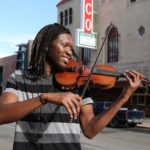 Saddiq Granger is a native Philadelphian, violinist and aspiring community organizer now residing in Waco, Texas.
Saddiq Granger is a native Philadelphian, violinist and aspiring community organizer now residing in Waco, Texas.
The Act Locally Waco blog publishes posts with a connection to these aspirations for Waco. If you are interested in writing for the Act Locally Waco Blog, please email [email protected] for more information.
by Kenneth Moerbe
After reading some articles in editorial section of Sunday’s (9-13-15) Waco Trib, especially the Q&A with the National Resource Network, Jimmy Dorrell’s column about another needed ‘Miracle on the Brazos’, and the editorial, “Long climb, Fiends for Life’s problems underscoring daily necessities of running nonprofits”, all of which I found very helpful, I found myself reflecting on my experiences the day before.
The first was as a participant in a community gathering sponsored by Mission Waco, and led by Jimmy Dorrell, that was an opportunity for the North Waco community to have some input into the future of a building near the corner of 15th and Colcord, which had just been purchased by Mission Waco/Mission World (MWMW) as part of its continuing efforts to revive this once thriving neighborhood in Waco. As a member of the MWMW Board of Directors, I had a particular interest in hearing community members share suggestions about what they would like to see happen with this building. I appreciated so much the number of folks from the community who attended and the enthusiasm with which many of them expressed what their hopes for this building, which Jimmy has referred to as the BUB, ‘ big ugly building’. These hopes included a non-profit grocery store, a restaurant which also trains youth for local jobs, an ethnic, cultural foods and clothing business, a center for family celebrations and events, etc. I hope the MWMW leadership can harness some of that enthusiasm , creativity and energy to turn the BUB into a BB B, a big beautiful building, used to make the area in which its sits into a more life enhancing place to live.
In the afternoon I volunteered with the Community Race Relations Coalition (CRRC), a diverse group of citizens and organizations whose mission is to promote ethnic and cultural awareness and appreciation to strengthen our community. I was present at a community awareness raising event at the East Waco Park, sponsored by the Northeast Riverside Neighborhood Association and the new Horizons Baptist Church. At the event I was helping to maintain the CRRC’s booth, where we tried to engage folks who were there with the question: How many races do you think exist on the earth? The persons who answered that question correctly were rewarded with some candy and a helium filled balloon. Early on we attracted a lot of children who were there. One of the persons to come to the booth while we were setting up and was around the three hours I was there, was a second grader, whom I will call Kiesha, who attended J.H. Hines Elementary. This young African-American child was there with her grandfather and a couple of brothers. She hung around the booth as we talked about all kinds of things. Seems she lived nearby and seemed to be familiar with some of the other folks who were setting up. We talked and I learned first that her mother was in jail, but that her mother was probably going to be released sometime around Christmas time. Without going into the details I learned when I inquired about her father, that he was also in jail, but she didn’t see him much because the jail ‘was much farther away.” She asked me if I had any daughters and a little bit about why I was there, and what we did in the CRRC, and what some of the words printed on a banner on our booth meant. She could read, but some of those words she saw there were ‘big words.” I enjoyed my time with her, appreciated her positive energy, and even with both of her parents were in jail, she seemed remarkably self-confident and actually a very happy child.
Another highlight of my volunteer time at East Waco Park was meeting again someone I had seen and heard speak at more than one community event a few years ago, and that was a Waco PD officer, Stan Mason. When he walked up, I introduced myself, sure that he did not remember me, I told him I remembered him because in his 20 plus years with Waco PD he had always worked the night shift primarily in North and East Waco. He was the personification of what is called ‘community policing.’ I noticed while we talked that a good number of people came to greet him as they arrived at the event. They were young and old, male and female, well attired and not so well dressed, a real mixture of humanity. In most instances they greeted him with a enthusiastic hug. He was obviously well loved by all of these folks. We got into some conversation and he repeated to me his commitment to the vocation to which he really felt God had called him. I remembered from before that he preferred the night shift because it gave him the opportunity to meet a lot of kids on the street in these neighborhoods and he felt if he reached out to them, because he was a cop who cared for them that maybe, just maybe, they would not get into trouble in these late night hours, as is the case with a good number of youth in these neighborhoods. I introduced him to one of my colleagues in our booth who after hearing our conversation asked him if he really believed that Waco PD was totally free of racial profiling. All I can say is that his response was definitely not defensive, but was realistic, and hopeful in terms of the present and future relationship between Waco PD and people of color, young and old.
All in all, I came home that afternoon with a lot of hope after talking with and listening to some of the folks who live in some of our economically poorest neighborhoods. I think that working together, especially as indicated by the strategies of Prosper Waco, that in time we will succeed in making our community a much better place to live for everyone!
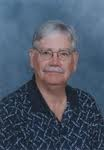 This post was written by Kenneth Moerbe. Kenneth is a Lutheran minister and the former executive director of Caritas. He has participated on just about every committee and task force in town that has anything at all to do with increasing food security or reducing poverty. When he and his wife, Paula, are not gallivanting all over the world on one of their many travels, they are busy serving on various boards, delivering Meals on Wheels and generally being two of the finest and most fun folks in Waco.
This post was written by Kenneth Moerbe. Kenneth is a Lutheran minister and the former executive director of Caritas. He has participated on just about every committee and task force in town that has anything at all to do with increasing food security or reducing poverty. When he and his wife, Paula, are not gallivanting all over the world on one of their many travels, they are busy serving on various boards, delivering Meals on Wheels and generally being two of the finest and most fun folks in Waco.
The Act Locally Waco blog publishes posts with a connection to these aspirations for Waco. If you are interested in writing for the Act Locally Waco Blog, please email [email protected] for more information.
(The Heart of Texas P-20 Council includes representatives from K-12 education, higher education and employers. They meet regularly to help coordinate efforts to launch our young people into productive lives as workers and citizens. This post is one in a monthly series of posts intended to share information about the work of this important group in our community. For more posts in this series, click here: P-20 education.)
By Ashley Canuteson
I have had the privilege of meeting some incredible people through my line of work over the past several years. A key facet of my job as College & Career Readiness Coordinator for Midway ISD is to help make connections between public educators, higher education, and folks in “the real world” – all for the benefit of students. After all, students need to leave us ready for success beyond high school. But students shouldn’t be the only ones who benefit from a group of constituents coming together to share ideas and learn from each other. My experiences have led me to realize that various partnerships coming from all of these efforts are mutualistic – they are not done solely for the benefit of students; rather, they are formed to truly help educate an entire community about how we can all work together for the successful advancement of an economically sound society. Wow! That was a mouthful! So, what does that mean exactly? I can best share an example of the power of mutualistic partnerships by telling the story of a wonderful advocate and community leader.
Rick Tullis, president of Capstone Mechanical and member of the Midway ISD Board of Trustees, was named this summer as one of four state Business Leaders of the Year by the Career & Technology Association of Texas (CTAT). He received this recognition because of a nomination written by Donna McKethan of Waco ISD, Christine Holecek of Education Service Center Region 12, and me. Through our work with each other, we came to realize that we all had seen the power of Mr. Tullis’ influence in a variety of ways. In addition to his commitments to Midway ISD, Mr. Tullis has been an active board member of the Greater Waco Advanced Manufacturing Academy (GWAMA), the Board of Directors for the Waco Business League, the Baylor School of Engineering Board of Advocates, the Baylor Scott & White/Hillcrest Board of Visitors, and the Board of Directors for the Waco Chamber of Commerce. Looking at his level of involvement, one can quickly see that Mr. Tullis is invested in the overall success of the Waco community. It is because of this far-reaching commitment and willingness to serve that he continues to make a lasting impact in the educational realm; however, it doesn’t stop there.
I have had the personal honor of working with Mr. Tullis in some of his volunteer roles – most specifically, with his time on the Steering Committee of the Heart of Texas P-20 Council. What I have realized in that time is that Mr. Tullis brings to the table a vision of shared learning for all. He isn’t there simply as a business representative trying to advise educators on what the world needs in its future workforce, although he shares some great perspective on that topic! He is also there to learn about how he can bring his network of colleagues into the world of education so we can all work together on helping our students become successful. “Preparing students is a shared responsibility of families, schools, and business,” said Tullis in a July interview with Hometown News. And he believes this wholeheartedly.
Mr. Tullis was an integral part of the collaboration between Waco ISD and various other school districts and business leaders who came up with the concept of the Greater Waco Advanced Manufacturing Academy. As GWAMA was coming to life, the educators learned plenty about the need for skilled graduates that exists in our local manufacturing workforce. It is fair to say that our local business leaders also learned much about the world of education. Together, these partners realized there are many ways they can work mutually to meet a variety of goals. Some of those goals benefit the educational institutions and some benefit local business. Even bigger than that, however, are the goals that are long term – the goals that focus on helping students today so that we help strengthen our community tomorrow.
It takes vision. It takes commitment. It takes time. It takes service. It takes a willingness to teach and a willingness to learn. It takes a team of partners focused on how they will contribute to the betterment of our community one relationship at a time. So how can YOU become a partner? How can you make a difference in the life of a student, or the life of a colleague, or the life of your community? We must expand our network of partners through open communication lines and specific opportunities for involvement. Mr. Tullis has challenged us all on the Heart of Texas P-20 Steering Committee to invite new partners to the table for discussions about ways we can all be involved in collaborating mutually on building a successful future. Ideas abound! Job shadowing for high school students, externships for teachers, career day involvement for younger students, college tours… the list goes on and on! Where can you find a fit and become a Partner with a Purpose? Our future needs you!
If you would like to get involved collaborating with the P-20 Council, please contact Fred Hills at McLennan Community College. His email is: [email protected].
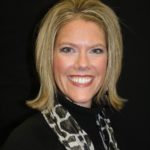 Ashley Canuteson is the Coordinator of College & Career Readiness at Midway ISD. She works with the district Career & Technical Education programs and has a passion for working with people. Ashley is a Waco native who graduated from Robinson High School, attended MCC before graduating from Baylor University, received her Masters degree from Tarleton State University, and is currently working on her Doctorate at Baylor. Ashley is the proud mom to two fabulous children – a future video game designer and a future geologist! She and her husband, Wade, enjoy volunteering together and traveling.
Ashley Canuteson is the Coordinator of College & Career Readiness at Midway ISD. She works with the district Career & Technical Education programs and has a passion for working with people. Ashley is a Waco native who graduated from Robinson High School, attended MCC before graduating from Baylor University, received her Masters degree from Tarleton State University, and is currently working on her Doctorate at Baylor. Ashley is the proud mom to two fabulous children – a future video game designer and a future geologist! She and her husband, Wade, enjoy volunteering together and traveling.
The Act Locally Waco blog publishes posts with a connection to these aspirations for Waco. If you are interested in writing for the Act Locally Waco Blog, please email [email protected] for more information.
by Dr. Cristina Cleveland
“El Cinco de Mayo: An American Tradition,” that’s the title of a book released in 2012 by David E. Hayes-Bautista, (professor of Medicine and founding director of the Center of the Study of Latino Health and Culture at the Geffen School of Medicine at UCLA). When I saw the title I was surprised he had the power to read my mind, and express my thoughts! An American tradition – true statement! I’m sure he explains things much better than I will (as Susana Olague Trapani says in her review David “elegantly and intelligently chronicles the development of the holiday …”), but I will give it a try.
Cinco de Mayo is undoubtedly a big celebration in my dear country Mexico, but in the USA it is sometimes mistaken as a celebration of our Independence from Spain, and that, my friends is celebrated on September 16th.
In late 1861 a well armed 6,000 French soldiers, the premiere army in the world at that time, were trying to get closer to Mexico City and to take control over the government. They forced the President of Mexico, Benito Juarez, to retreat. On their way from Orizaba’s Port to Mexico City they encountered a poorly equipped Mexican Army of 2,000 near the City of Puebla, against all odds Mexico won the battle on May 5th of 1862.
Every year in order to commemorate this battle, they have a big celebration in Puebla City. A representative of The Mexican President, Puebla’s governor and other authorities begin the celebration by presenting respects to the Mexican flag, and singing the National Mexican Anthem. This is followed by a big parade, which this year, 2015, included 8,350 militaries, 144 automobiles, 60 police motorcyclists, 150 horsemen, 6 canoes, 16 commemorative flags and the same amount of banners.
Very impressive, both, the great victory for the Mexican Army over the French Army and the celebration itself, but as great as it sounds, it is far from being our most important national holiday.
Our very big holiday is on September 16th, when Mexico got its Independence from Spain in 1821 after 11 years of war. (We consider it our independence day, even though Spain did not recognize Mexico as a sovereign country until later,1836.)
Now, our big celebration is on September 15th… mmm, wait! It seems there is something wrong here! In the paragraph above I just said September 16th . Well, we begin to celebrate early, you know! We, Mexicans, don’t need any excuse to party! It has been said that General Porfirio Diaz, Mexican President from 1876 to 1911 (yes, 35 years!), begun to celebrate on September 15th because it was his birthday, but other sources say that the celebrations has begun on the night of the 15th since 1840.
 The Celebration is held in the National Palace in Mexico City in front of thousands of people. The President, along with high ranking military officials and ambassadors from other countries approaches the balcony and at 11:00 p.m. on September 15th , rings the Bell of Dolores and cries out loud while holding and waving a Mexican flag:
The Celebration is held in the National Palace in Mexico City in front of thousands of people. The President, along with high ranking military officials and ambassadors from other countries approaches the balcony and at 11:00 p.m. on September 15th , rings the Bell of Dolores and cries out loud while holding and waving a Mexican flag:
“Mexicans! Viva the heroes that gave us a country! Viva Hidalgo! Viva Morelos! Viva Josefa Ortiz de Dominguez! Viva Allende! Viva Aldama y Matamoros! Viva Galeana! Viva Guerrero! Viva Guadalupe Victoria! Viva Francisco Ignacio Madero! Viva Emiliano Zapata! Viva the National Independence! Viva México! Viva México! Viva México!”
After that, you will hear a lot of bells ringing and the fireworks begin. Outside, the crowd is ready to enjoy all kinds of Mexican food from the concession stands, listen to mariachis or tríos, and keep going with the party until early hours in the morning.
If you are not brave enough to face the crowds in downtown (my family’s case), you usually turn the TV on to watch the whole spectacle and then have dinner with your family and friends.
Traditions vary from family to family. In my home, my parents used to dress up as the heroes of the Independence or at least with époque clothes. My sisters and I would probably just wear green, white and red representing the colors of the Mexican flag.
I asked my dear friend Bob, a Wacoan, “ Why do Americans celebrate Cinco de Mayo?” He knew it wasn’t the Mexican Independence Holiday, but he said with a big smile, “Cristina, is just a good excuse to have margaritas.” He made me laugh! He always make me laugh, but it’s true, as David E. Hayes-Bautista mentions in his book, the celebration in America was created by Latinos in California during the mid nineteenth century. Through the years, the meaning of the holiday has changed from “immigrant nostalgia” in the 30’s, to patriotism during World War II, to “Chicano Power” in the 70’s and to mainly commercial intentions in the 80’s and 90’s… I would say that is also the case these days.
I’m touched to think that Americans celebrate a Mexican holiday, so, let’s have a new and better “excuse to have margaritas.” Let’s celebrate together the Mexican Independence on September 16th, the date that marked Mexico as an independent, free and sovereign country.
In Waco, you can celebrate Mexican Independence day from 5:30-7:30 pm on September 16 at the Cen-Tex Hispanic Chamber of Commerce, 915 LaSalle. The Waco Hispanic Museum Committee will be serving cake and drinks. There will also be a history lesson about El Grito de Dolores. Admission is free.
 Also, throughout the rest of September, October and November, 2015, be sure to get out and enjoy “¡Viva Waco!” our Waco celebration of Latin culture. The vibrant sights, sounds and flavors of Latin art, music, and cultural events and activities will be on display in dozens of Waco locations. Besides celebrating Mexican Independence Day (Sep 16th), there will be festivities for Dia De Los Muertos (November 1st) as well as a whole season full of Latin-themed events and exhibitions suitable for the whole family (many of them free of charge) from Waco’s many arts and cultural organizations. To get the details visit the website: www.creativewaco.org/vivawaco/.
Also, throughout the rest of September, October and November, 2015, be sure to get out and enjoy “¡Viva Waco!” our Waco celebration of Latin culture. The vibrant sights, sounds and flavors of Latin art, music, and cultural events and activities will be on display in dozens of Waco locations. Besides celebrating Mexican Independence Day (Sep 16th), there will be festivities for Dia De Los Muertos (November 1st) as well as a whole season full of Latin-themed events and exhibitions suitable for the whole family (many of them free of charge) from Waco’s many arts and cultural organizations. To get the details visit the website: www.creativewaco.org/vivawaco/.
 This Act Locally Waco blog post was written by Dr. Cristina Cleveland. Cristina was born and raised in Mexico City. She’s a Pediatric Neurologist and when she moved to Waco back in 2008, she was planning to be a stay-home-mother of their now 7-years-old-twins. Things changed (as usual) and now, after getting a Master’s Degree in Education, she works for the Foreign Language Department in Waco ISD. In her spare time you can see her driving her twins to the library, karate, soccer, swimming and art classes. If she could just get a “time out,” she would probably be walking, swimming, reading or watching a foreign movie.
This Act Locally Waco blog post was written by Dr. Cristina Cleveland. Cristina was born and raised in Mexico City. She’s a Pediatric Neurologist and when she moved to Waco back in 2008, she was planning to be a stay-home-mother of their now 7-years-old-twins. Things changed (as usual) and now, after getting a Master’s Degree in Education, she works for the Foreign Language Department in Waco ISD. In her spare time you can see her driving her twins to the library, karate, soccer, swimming and art classes. If she could just get a “time out,” she would probably be walking, swimming, reading or watching a foreign movie.
The Act Locally Waco blog publishes posts with a connection to these aspirations for Waco. If you are interested in writing for the Act Locally Waco Blog, please email [email protected] for more information.


